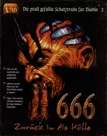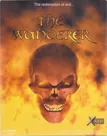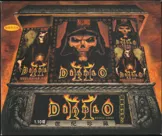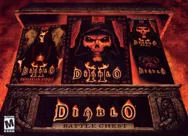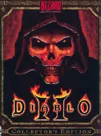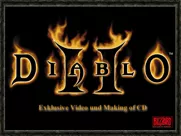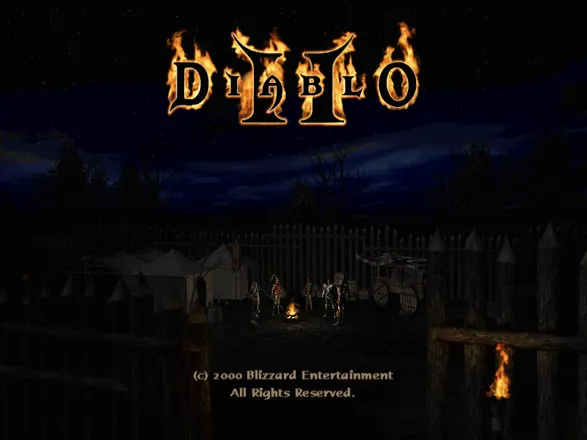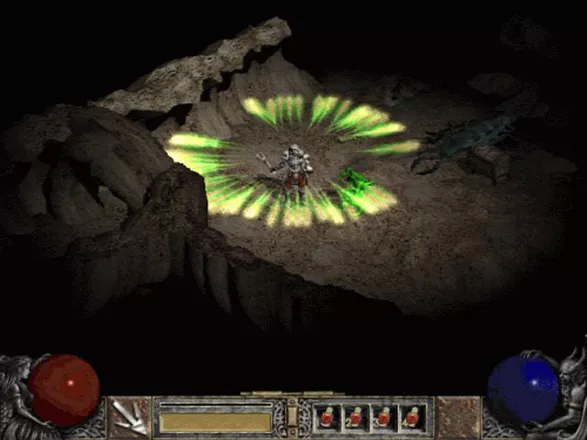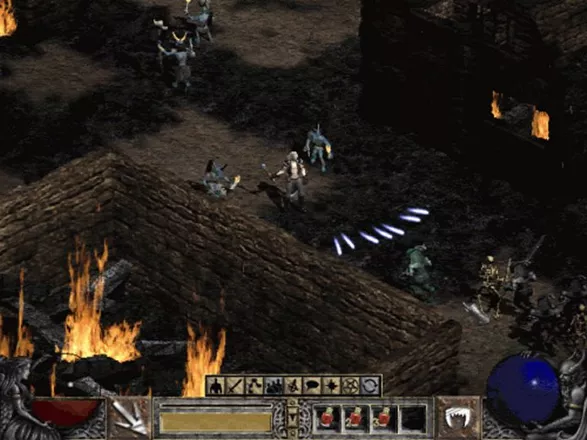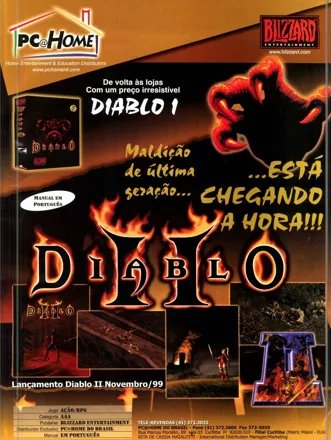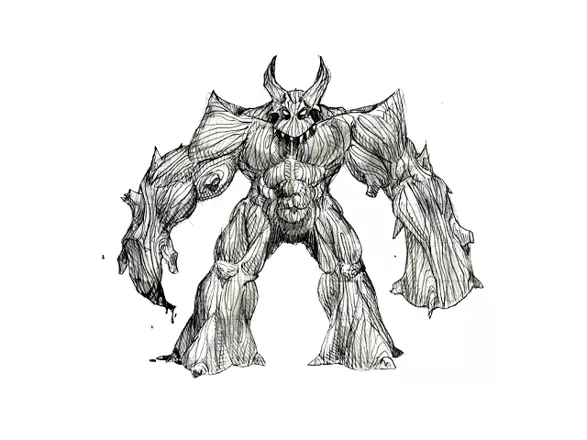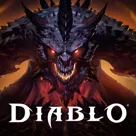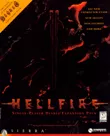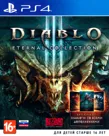Diablo II
Description official descriptions
Knowing well that Diablo's spirit could never be truly destroyed, the hero of Tristram made the noblest sacrifice of all: he took the spirit of the Lord of Terror into himself, hoping that his strength of will could contain the demon within. He was wrong. Diablo's essence corrupted him, gradually taking over his human nature. He has turned into the Dark Wanderer, a mysterious being whose every step causes destruction and death. A nameless adventurer visits the Rogue Encampment and decides to help its inhabitants by slaying monsters surrounding the area, and eventually pursuing the Dark Wanderer himself.
Like its predecessor, Diablo II is an action role-playing game. The player may choose between five available characters classes: Amazon (a rogue-like class with ranged attacks), Necromancer (can summon undead and inflict status ailments), Barbarian (a powerful melee fighter who can dual-wield weapons), Sorceress (offensive spellcaster), and Paladin (fights with shields and can cast support spells). Much of the game takes place in randomized dungeon-like areas heavily populated by enemies. Unlike the previous game, the environments are not restricted to a single dungeon and include variously themed locations, each with its own town and quests.
The player character gains experience points from slaying monsters, and can be leveled up manually, increasing his or her primary attributes and acquiring abilities. Much of the customization relies on equipment and item combinations. Diablo's magic has been replaced with skills: class specific abilities that can be purchased with skill points as characters level up. For example, a Paladin's skills allow him to cover allies with a protective aura, while a Sorceress can learn to fire lightning bolts and frozen blasts from her hands. Skills can be purchased several times to level them up, and some skills, when purchased, will increase the effectiveness of other skills. A new item type, socketed, has been added as well. Socketed items can be modified permanently by adding magic gems to them, increasing their statistics or adding elemental properties.
Spellings
- 暗黑破坏神II - Simplified Chinese spelling
- 暗黑破壞神 2 - Traditional Chinese spelling
Groups +
- BestSeller Series (Cendant / Havas / Vivendi Universal) releases
- Diablo series
- Game feature: In-game screenshot capture
- Gameplay feature: Alchemy
- Gameplay feature: Armor / weapon sets
- Gameplay feature: Auto-mapping
- Gameplay feature: Character development - Skill distribution
- Gameplay feature: Controllable pet companions
- Gameplay feature: Gambling
- Gameplay feature: Optional permadeath / permanent death
- Games with randomly generated environments
- Middleware: Bink Video
- Protagonist: Female (option)
- Video games turned into board / card games
Screenshots
Promos
Videos
See any errors or missing info for this game?
You can submit a correction, contribute trivia, add to a game group, add a related site or alternate title.
Credits (Windows version)
1,450 People (295 developers, 1,155 thanks) · View all
| Game Design |
|
| Project and Design Leads | |
| Executive Producer | |
| Senior Producer | |
| Producer | |
| Technical Producer | |
| Design | |
| Lead Programmer | |
| Programmers | |
| [ full credits ] | |
Reviews
Critics
Average score: 88% (based on 64 ratings)
Players
Average score: 3.9 out of 5 (based on 292 ratings with 19 reviews)
"click...click...click..." (in a good way)
The Good
Everything!!!!! well, everything except for the graphics...It's like Cinderella in a box...once you get past the graphics and looks, you'll be in LOVE...
The five classes are a complete improvement on the original, with each one doing different things, different spells, skills etc....further more, there is additional specialization within classes, especially in the spell casting classes, and paladin class...gives the game HUGE replayability...plus an enormous game world, definitely worth the price tag...
Multiplayer is much better...no hacking...no more people walking around with Fluffy's polka-dotted sword of the orangutan that can kill you in one hit...also includes cool clan halls that can be expanded, and a hardcore option...
New weapons...there are fresh interesting item sets, unique items, socket items...gems...makes the game very interesting...
An all new spell/skill system that rocks...instead of picking up books everywhere...you can choose which spells and skills you want and which you don't by adding skill points into desired skills...which gives you total control over your character...want a fire based sorceress instead of a lightning one? than just pump the points you get into fireball or warmth instead of lightning...want an axe wielding barbarian? then just increase your axe mastery, and leave that sword mastery alone...the possibilities are endless...
It's an improved Diablo...what more can you ask for???
The Bad
The graphics can be some up in one word...crap...although many people say that Act II has amazing graphics, I would like to voice my opinion that it is still crap...the graphics engine is the old diablo engine, but in some areas it looks even worse that Diablo I's...and minimal 3D acceleration...
Corpse retrieval...especially for necromancers and sorceresses...you'll probably die a few more times trying to get your friggin' body back, when you're weak, naked and some pissed off monsters are standing between you and your items...
AI pathfinding...when you are a necromancer, sometimes it will take all of you will power to keep yourself from going insane...sometimes your minions are stupid beyond belief, as they clog up in congested hallways, block you from escaping, walk into walls instead of around them...even more half-assed than the Dikatana AI, if you can believe that...however, it is only sometimes...so it is quite okay as long as you don't have too many in a cramped space...
Battle.net LLLLLLLLLAAAAAAAGGGGGG...although not as bad as before...sometimes the slowdown is annoying...
The Bottom Line
The Blizzard hack n' slash clickfest is back and better than before. With five classes, three difficulties and a huge game world, the replayability is endless, even more so with B.net...excellent gameplay that keeps you glued to your seat...The cutscenes are awesome...If you need your sleep or treasure the good condition that your mouse is in, you might want to pass...if you don't, it is your duty as a human lifeform (or otherwise) to pick up a copy of Diablo II..
Windows · by MadCat (53) · 2000
The Good
You're probably wondering 'what the hell does that mean?', so allow me to explain. Quake and Doom, both 1st person shooters, have little in the way of strategy to complete any objectives. Simply choose your weapon, keep your heart in your mouth and blast whatever may come between you and the blue/red/green/yellow with purple spots key and, of course, the exit.
Now the same can be said for Diablo, though perhaps not exactly the same. There is a small level of strategy to the game (mainly in the way of building up your selected character, from the chosen classes, to what you think will be the strongest to taken on the dens of evil) but other then that, it's fairly easy to call it a point and click shooter, for that's what you'll do ... for the most part.
Now that's, in no way, an indication of whether the game is good or not, but more an observation. As it is, Diablo is addictive, easy to get into yet hard to master and, more importantly, it's fun. You won't see any Baldur's Gate or Neverwinter Nights between the lines, but as Blizzard have done so often in the past, Diablo II is a successful creation of a dungeon hack and slah like the good old days.
The key to the game is the creation of a compelling story. It's the kind of imaginative tale I've come to expect from the Warcraft clan. In its day, the FMV sequences were top notch, the characters were detailed and beautiful to watch in action and the orchestral score beautiful.
By today's standards, visually at least, it doesn't hold a candle to the modern RPG or action title, but don't hold that against it. You'll still find more to do here, both single and multiplayer, and much more to see thanks to the wonderful design.
The Bad
Let's face it, after a certain amount of time, hacking and slashing your way through level after level, you may start to wonder whether it's worth carrying on. There are areas where it seems just like the last level completed, despite different characters to defeat. It comes down to how compelled you are to work your way through the game, trying each of the character classes and/or competing against others online through Battle.net.
The online service is, in many ways, the saving grace for this and Blizzard's back catalogue. Players the world over will be fighting along side and against each other long after the third or fourth sequels are released.
The Bottom Line
While we wait with interest to see whether Blizzard will ever return to the world of Diablo (and I wait to edit this review once again when it does), the second title in the franchise still has what it takes to captivate an audience. If you, of the minority, haven't yet dived into the Diablo world, hunt this one down and give this little gem a shot.
Windows · by Kartanym (12418) · 2006
The Good
Diablo II. The most schizophrenic relationship I've ever had with a video game. I played it when it was first released, got addicted, started hating it, removed it from my collection. Got it again later - same story. Waited some more time until I became a fan of action RPGs - and this time around I tried to understand what keeps beckoning me back after the inevitable "hate phase" kicks in.
For most purposes, Diablo II is an expanded variant of its dad, Diablo. Now, that game had a huge influence on the development of role-playing games in the West. For years I've been asking myself: why? With the varied and complex RPGs the West had been producing, how could this mindless hack-and-slash fest become so popular? The answer: precisely because it's neither varied nor complex. Before Diablo, brain-dead entertainment was firmly entrenched in the action culture. You turned to RPGs if you wanted deep, slow, meditative immersion. If you just wanted to have adrenaline-loaded fun, you turned to action games. The achievement of Diablo was that it transferred that kind of pleasure into the world of RPGs.
Diablo was a distillation of the most primeval RPG elements, and that was the secret of its success. It opened the doors to the more casual players, those who wanted to get into a game right away and immediately get sucked into a simplistic, yet devilishly addictive RPG system. Speed was the key: you were thrown right into action and didn't need to work on any skills of your own to vanquish enemies with a simple click. King's Field, released two years earlier, had a similar dungeon-crawling, purely action-based role-playing, and was much deeper, better designed, and more evolved than Diablo in every possible way - but it was slow. Guess which of the two games became more popular. In addition to the fact pace, the maniacal, obsessive collecting of random items would deprive people of essential daily routines. Ys, released almost a decade earlier, defined action role-playing with its ease of gameplay, but came nowhere close in satisfying our collector's instinct.
Diablo II is very similar to its predecessor in design philosophy, but overall it's a more varied game. Choosing a character class means little on its own: you'll have to build up your character, not just by gaining levels but by developing skills. Each class has three skill trees in three different disciplines. These disciplines are diverse as well and essentially provide an equivalent of additional classes.
To illustrate: the Necromancer class allows the player to summon monster minions to assist the naturally weak character. However, that's not the only way to develop a Necromancer, since another skill tree takes him into the direction of sabotaging enemies by inflicting status ailments of them, while the third one is more defensive, with treacherous bone skills that would provide the much-needed protection. Each of these Necromancers requires a very different approach not only when you have to decide which skill to invest points in, but also in the gameplay itself. Playing the summoning Necromancer, for example, feels more like controlling a commander in a real-time strategy game. A good, steady build will allow you to stand and watch how your skeletons viciously tear enemies apart.
In addition to this, Diablo II enhances and multiplies everything that made its predecessor addictive. There are many more types of monsters and an absolutely mind-boggling amount of items. The randomization of items works better than ever before since there are so many new kinds of equipment, leading to endless ways to outfit your character. Matching sets, gems that can be inserted into equipment for additional bonuses, runes, charms - you'll see no end to that when you emerge from your computer, pale from lack of sleep. No two builds will ever be alike, and you'll feel compelled to keep playing just to see what your character grows into. It's almost like raising a virtual pet, which is another trait Diablo games popularized (along with very low learning curve) that found its way into today's casual gaming.
No review of Diablo II would be complete without mentioning its cinematics. They are quite stunning, and I doubt there was a game at the time that could complete with them. The spectacular intro overwhelms you before you even begin playing the game. Those movies are impeccably directed and convey a captivating, almost haunting feeling. Somebody here should consider a film-making career.
The Bad
Now it's time to share the reasons which compelled me to get rid of this game more than once. I guess that would be easier, since those who don't like Diablo II would probably not hesitate to state the reason: repetitive gameplay.
Yes, experimenting with skills and building up a character can go in myriads of ways. But the other part of playing this game, what most people would consider the actual gameplay, consists of killing enemies and nothing else. Throughout the entire game you'll be slaying ridiculous amounts of monsters with next to no skill involved in the process itself. The game almost completely automatizes the action aspect, reducing it to an elementary point-and-click activity that requires no real effort or investment from the player. It's nearly on par with the old Ys games in its purely mechanical approach to combat.
The hyper-simplified battles would have been less of a problem if the game offered some other challenges. Unfortunately, while introducing several towns and open areas, the developers didn't find it necessary to populate them with anything but signpost NPCs and monsters. This creates an unpleasant dichotomy that was absent in the first game. Diablo was a dungeon crawler and didn't strive to be anything else. Diablo II, on the other hand, seems to promise more, but doesn't really deliver the promise.
This problem leads to lack of focus resulting in disenchantment. Once you realize that, despite the drastic change of scenery, you'll be treated to the same gameplay all the time, you begin to feel disillusioned and angry. The gameplay becomes tedious and tiresome, forcing you to stop a playing session simply because you've been doing too much of the same. Playing Diablo II is not unlike going to a buffet that offers just one kind of favorite food: you are exhilarated in the beginning but want to throw up in the end. Diablo II is irritating because it has absolutely no ambitions concerning the basic gameplay mechanics even though its size has been greatly increased. It may come across as an inflated, over-bloated variant of the first game.
Lack of imagination in gameplay design is probably a result of randomization. I never liked randomly generated environments, and, while I can see the logic behind the random items of Diablo II, I don't understand why it was necessary to randomize the playing area itself. It's true that the scenery is nice, but you can't shake off an uncomfortable sensation when exploring those plains and corridors that will have a different layout next time you start the game. Random locations means no attachment to them: you can't get attached to something that was designed by a soulless machine and won't be there during another playthrough. There can be no puzzles, because puzzles demand hand-made locations with actual design involved. Exploration loses its meaning, because you can't really explore an area that doesn't actually exist.
Absence of any life-like activity in friendly areas is depressing. Most dialogues are dry and humorless, and no NPC makes you care for him. There is something annoyingly calculating in the way Diablo II presents those characters, whose sole purpose appears to be feeding you boring, uninspired quests and selling you items. There is no feeling of cohesion in the game world, as those isolated towns are lost in the ocean of vast areas populated by nothing but hostile creatures. There aren't even any wandering salesmen or anything of the kind, making the world strangely artificial. There is really very little charm in Diablo II. It can impress and absorb you, but it cannot quite enchant you.
The gorgeous cinematics form a nice little story when viewed one after the other, but that story has next to nothing to do with what we accomplish in the game itself. The next movie simply continues where the first one left off. Without understanding the game's lore you'll even find it hard to connect between the events depicted in the intro and the entire first act, where you run around and kill monsters for money and meet none of those enigmatic characters introduced there. There is a rather jarring discrepancy in tone and presentation between the movies with their dramaticism and vivid characterization, and the game itself, which has none of that. The actual in-game story is close to non-existing and involves killing four or five big bosses in the most formulaic way possible.
Diablo II is bound to repel most people who value creativity and attention to detail, because it does its own thing only and mercilessly removes anything standing on its path. There are no memorable moments, no sweet little details, and very little human touch behind its cold, calculating facade.
The Bottom Line
While the constant stream of addictively simplified upgrading can - and will - suck you into the game, the sensation will only last until the sobering reality of soulless, randomized design and skill-less gameplay kicks in. Diablo II may entice you with its distilled RPG mechanics at first, but ultimately reveals itself as a shallow, highly superficial product.
Windows · by Unicorn Lynx (181775) · 2016
Discussion
| Subject | By | Date |
|---|---|---|
| Why am I addicted?.. | Unicorn Lynx (181780) | Jul 2, 2013 |
Trivia
1001 Video Games
Diablo II appears in the book 1001 Video Games You Must Play Before You Die by General Editor Tony Mott.
Dungeons & Dragons
Diablo II was adapted into a set of two D&D rulebooks: Diablo II: Diablerie, published in 2000, and Diablo II: To Hell and Back, published in 2001, in addition to which a Diablo II set for the Dungeons & Dragons boardgame was released by Wizards of the Coast in 2000.
Promotion
Blizzard itself produced an action figure line, with figures depicting the Barbarian, the Unraveler, and of course, Diablo. They also released a whole stack of merchandise, including Zippo lighters, wristwatches and mouse pads, all in limited edition.
References: Diablo
The much rumored and non-existent secret "Cow Level" from the original game was actually added to Diablo II. It is just a flat plain, populated by bipedal cows, which go "Moo! Moo!" in deadpan human voices. The level also features a boss, "The Cow King", who looks just like all the other cows.
In Act I, the player can enter a portal to the town of Tristram, now destroyed by demons. Some characters from Diablo can be seen there. Decard Cain and Griswold the Blacksmith are alive; the former will help the player with his quests while the latter is possessed by evil powers. The remains of Wirt the Peg-Legged Boy can also be spotted; his leg allows the player to enter the cow level.
References
Once in a great while, one of the zombies can be heard uttering "brainsss". This is a reference to the numerous Living Dead movies, in which zombies hunger for human brains.
Awards
- Computer and Video Games
- 2005 - #25 "101 Best PC Games Ever"
- Destructoid
- 2009 - #7 "Top Video Games of the Decade"
- GamePro
- 2008 - #11 "The 32 Best PC Games"
- GameSpy
- 2000 – Special Award for Cut-Scenes
- 2011 – #7 Top PC Game of the 2000s
- GameStar (Germany)
- Issue 02/2001 - Best Game in 2000
- Issue 02/2001 - Best Multiplayer Game in 2000
- Issue 03/2001 - Best Game in 2000 (Readers' Choice)
- Issue 12/2008 - Special mention in the "10 Coolest Levels" list (for the secret level "The Moo Moo Farm")
- IGN
- 2009 - Issue 12/2008 - One of "Gaming's Top 10 Easter Eggs" (for the secret level "The Moo Moo Farm")
- PC Gamer
- April 2005 - #16 "50 Best Games of All Time"
- 2007 - #82 "Top 100 Games"* PC Player (Germany)
- Issue 01/2001 - Best Online Game in 2000
- VideoGamer.com
- 2009 - #49 "Top 100 Games of the Noughties"
Information also contributed by Ajan, Kasey Chang, Patrick Bregger, PCGamer77, phlux, Tibes80, and Scott Monster.
Analytics
Upgrade to MobyPro to view research rankings!
Related Sites +
-
Diablo Universe
Blizzard's Complete Support Page for the Diablo Series -
DiabloII.net - The Unofficial Diablo Site
One of the most detailed and comprehensive unofficial Diablo II websites on the internet. -
Karczma Diablo 2 (archived)
Official Polish Diablo 2 website. -
PlanetDiablo
A great news site for everything Diablo.
Identifiers +
Contribute
Are you familiar with this game? Help document and preserve this entry in video game history! If your contribution is approved, you will earn points and be credited as a contributor.
Contributors to this Entry
Game added by MAT.
Macintosh added by Xoleras.
Additional contributors: Blackhandjr, Zovni, Unicorn Lynx, Indra was here, Brian Jordan, Vaelor, Ajan, Pseudo_Intellectual, SharkD, Paulus18950, Cantillon, Patrick Bregger, FatherJack.
Game added July 4, 2000. Last modified April 23, 2024.


